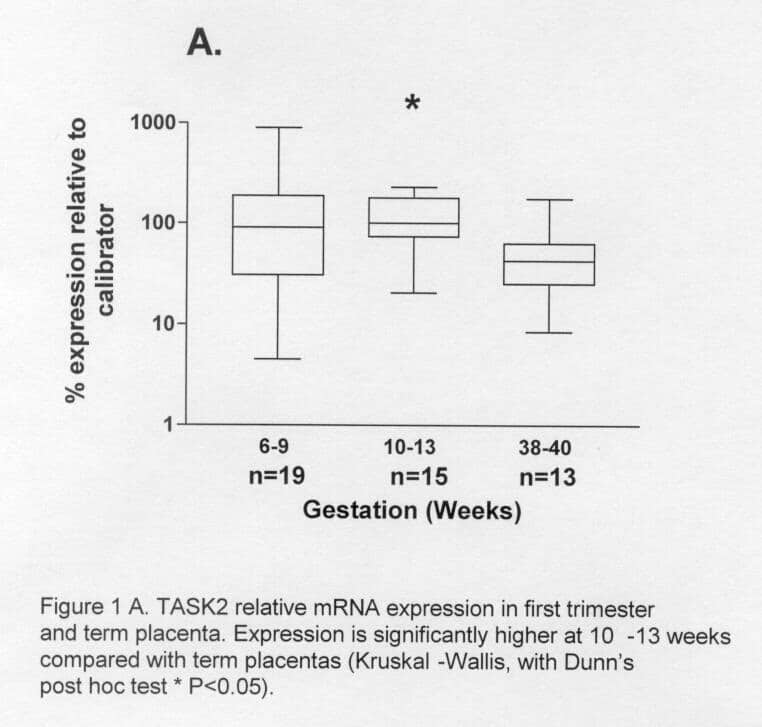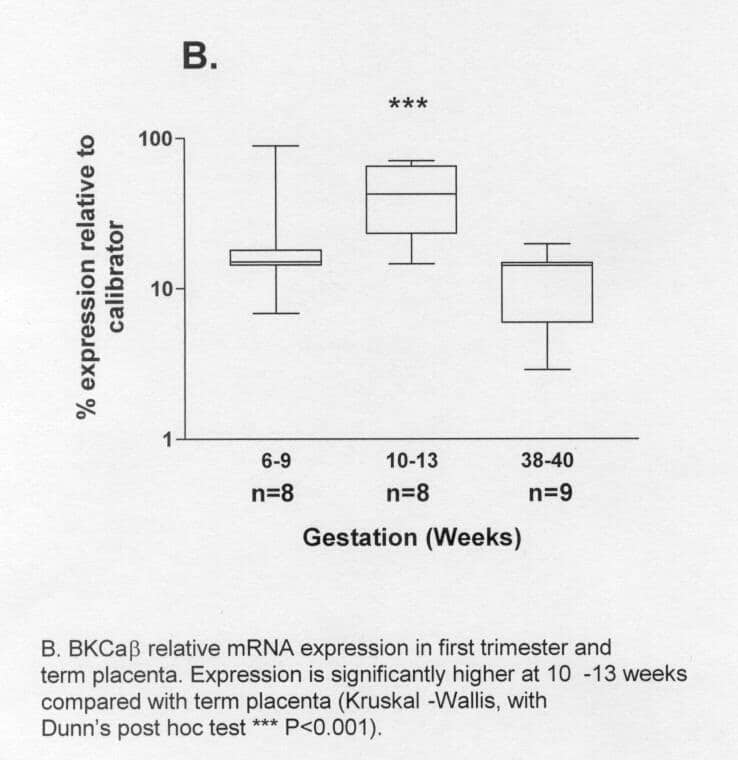The syncytiotrophoblast facilitiates exchange of ions between the maternal and fetal blood and expresses K+ channels at the mRNA and protein level1. One of the functions of K+ channels is to set syncytiotrophoblast membrane potential and cell excitability which affects electrochemical gradients and electrogenic nutrient transport across the placenta. Over the course of pregnancy, the syncytiotrophoblast microvillous membrane potential changes, being more negative in first trimester than at term2. At around 10-12 weeks maternal blood flow in the placenta is established, resulting in increased oxygenation, which may affect oxygen sensitive K+ channels. This study, therefore, examined how the expression of six K+ channels (TASK1, TASK2, BKCaα, BKCaβ, Kv1.5, Kir2.1), some with known oxygen sensitivity, alters with placental development across gestation. First trimester placentas (6-9 and 10-13 weeks) were collected with local ethical approval following written informed consent, from medical and surgical terminations performed for socioeconomic reasons, and placentas from normal vaginal and Cesarean section deliveries at term. Tissue sampling, total RNA isolation and cDNA production were prepared as described previously3. K+ channel expression across gestation was quantified using Sybr Green 1 quantitative PCR. The six K+ channels and β actin sequences were derived from GenBank with reference to BLAST assessment and primers designed with Beacon Designer software. 1μl of each placental sample was run as triplicate reactions with a passive reference dye. To quantify expression sample cycle threshold values were used to calculate initial input amounts using a standard curve constructed from cDNA generated from quantitative human reference RNA and normalised to a human reference cDNA calibrator sample. Gene expression is presented as percentage expression relative to calibrator. Of the genes examined only TASK2 and BKCaβ transcription are gestation dependent, showing upregulated transcription in late first trimester in relation to term (Figure 1). These data therefore provide the basis for functional studies on these channels in relation to placental development.
King's College London (2005) J Physiol 565P, PC173
Communications: Potassium channel gene expression over gestation in human placenta
Lacey, Helen ; Glazier, J D; Greenwood, S L; Sibley, C P;
1. Academic Unit of Child Health, University of Manchester, Manchester, United Kingdom.
View other abstracts by:
Where applicable, experiments conform with Society ethical requirements.


